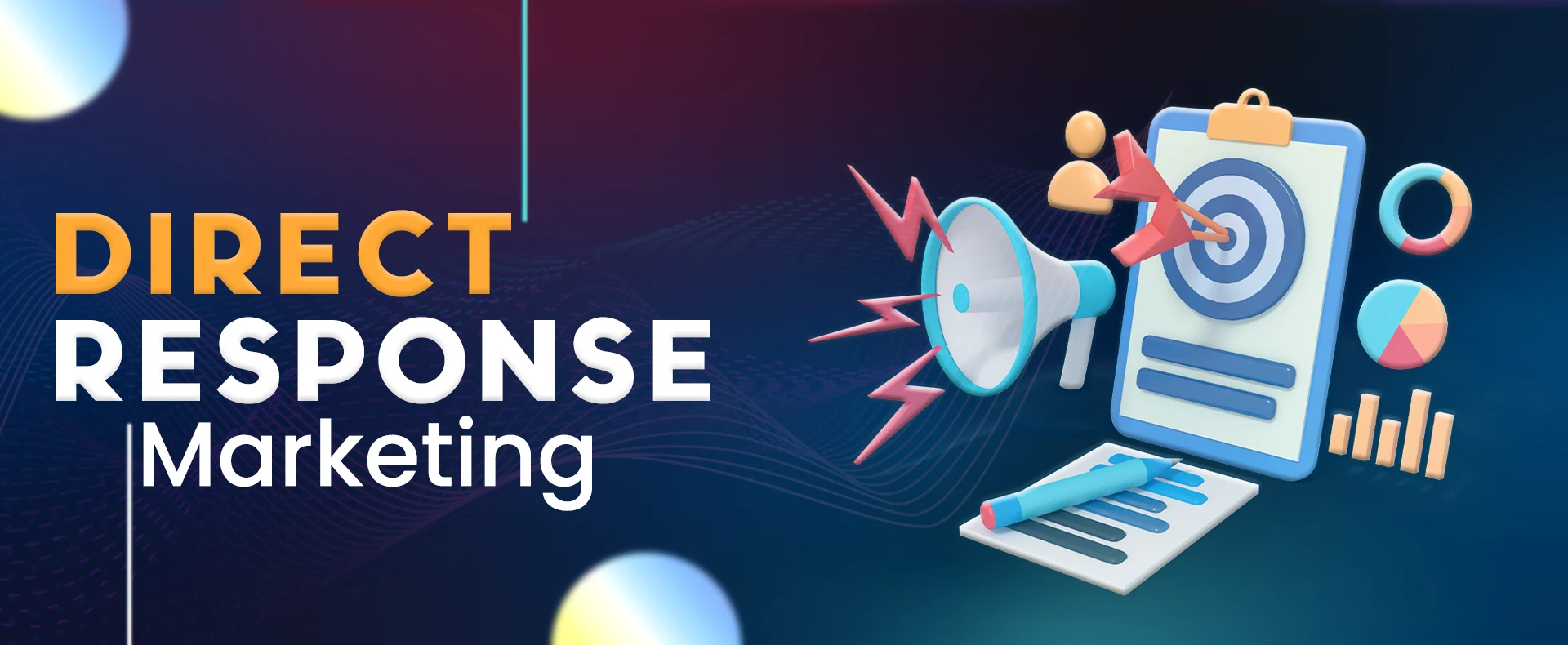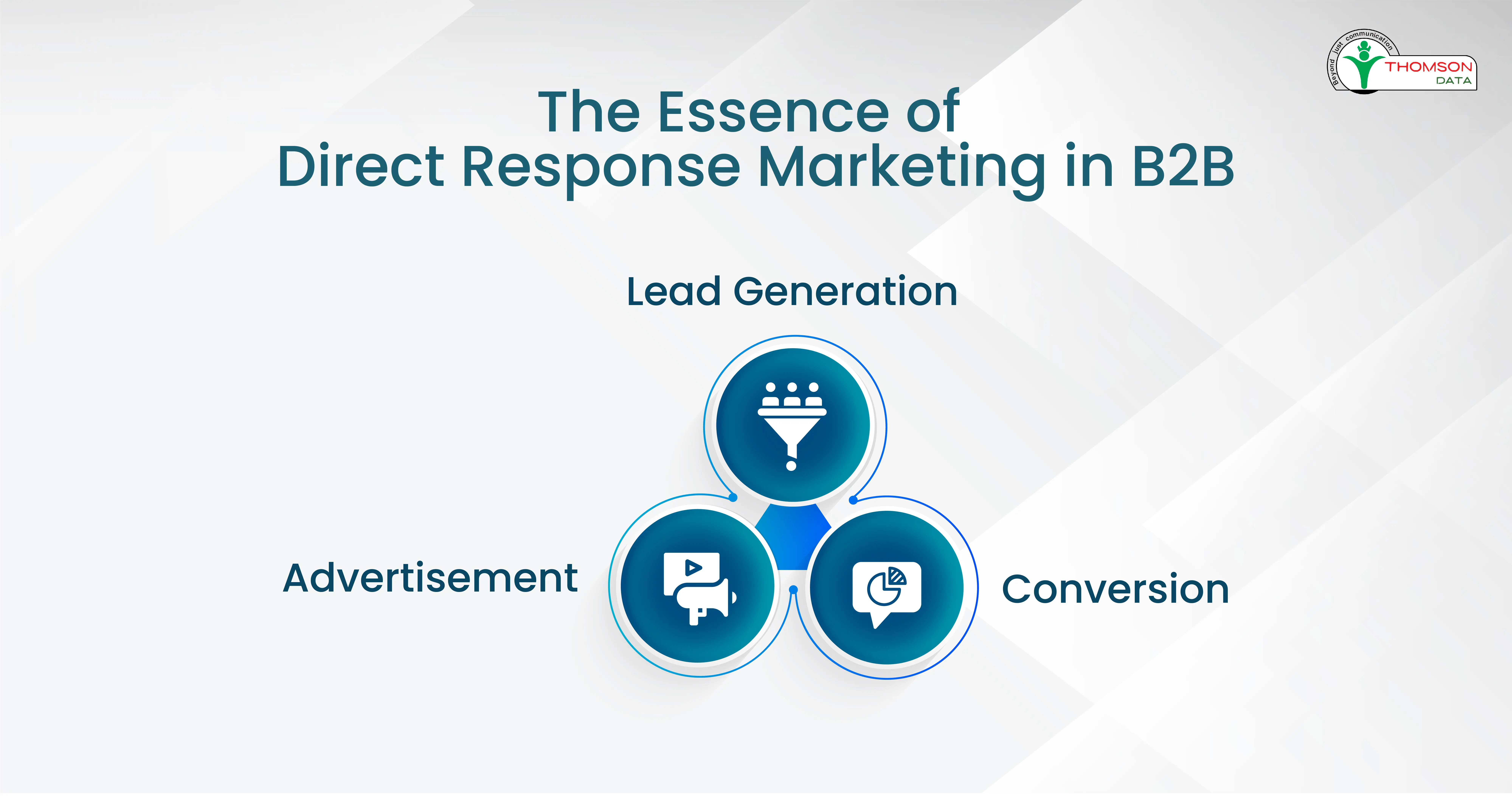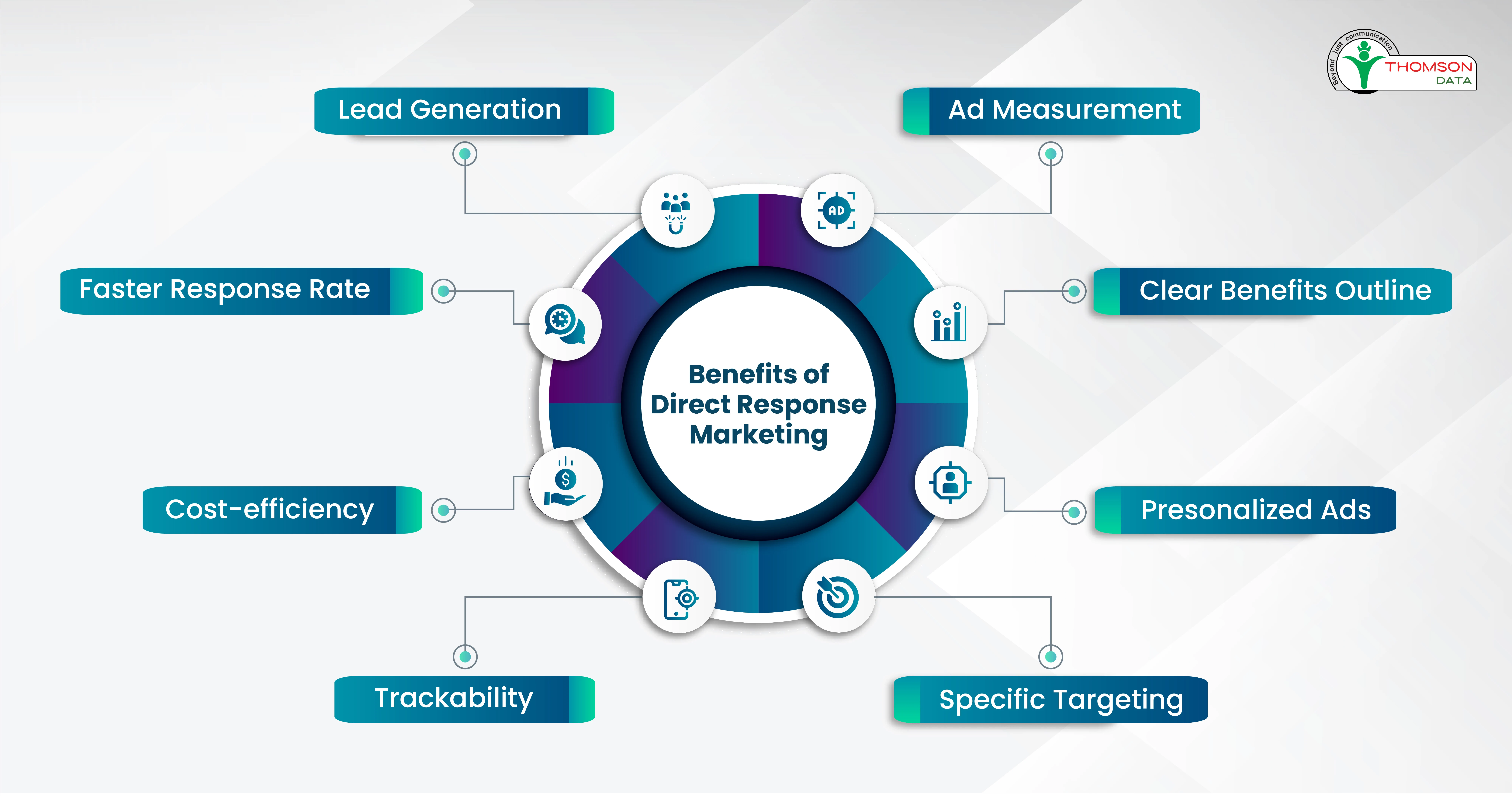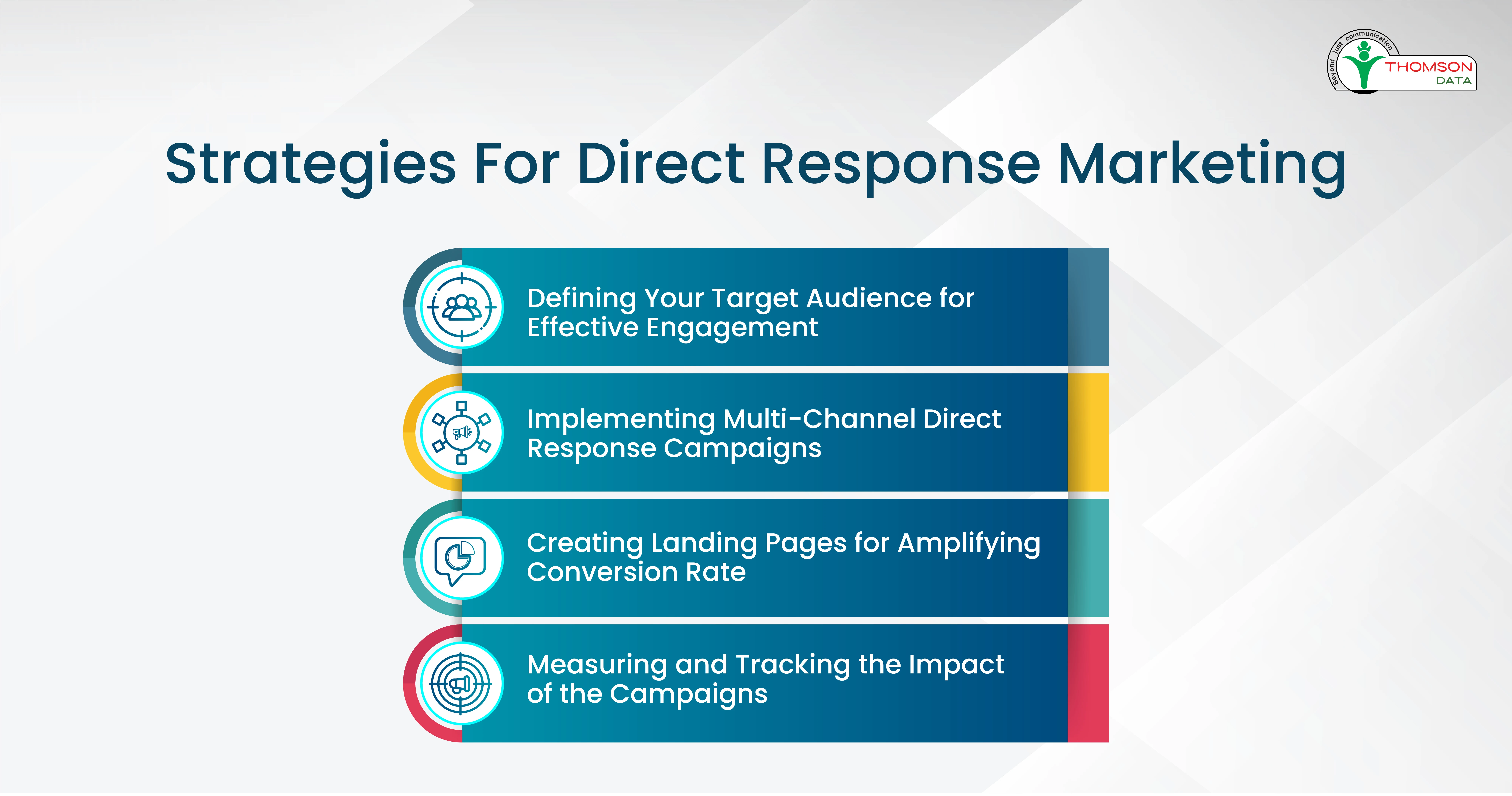
In the fast-paced world of B2B, capturing the attention of decision-makers is no easy feat. With a multitude of messages as and when required enter into their mailbox, it takes something truly captivating to break through the noise. The solution is direct response marketing. This comprehensive guide is your roadmap to unlock its full potential for your B2B success.
Table of Contents
The Essence of Direct Response Marketing in B2B:

In this competitive landscape. Marketers need to bring out-of-the-box strategy to stand out among the competitors. Where every communication approach matters, the traditional spray-and-pray tactics won’t be sufficient to engage decision-makers on a personal level. And the most challenging would be converting them into qualified leads. Where the goal is to generate quick, actionable leads, direct response marketing emerges as a powerful strategy. By understanding direct response marketing, you can influence, persuade, and ultimately win over possible prospects (decision makers) that holds the key to your B2B marketing success.
Why Direct Response Marketing Matters for B2B Success:

Direct response marketing aligns differently from long-term marketing goals. It is designed to cater the ROI-driven campaign where the priority is to drive quality leads with data-enriched personalized approach. It has the potential to impact revenue growth and client acquisition, amplifying client retention rate and increasing quality leads.
Let’s take an example to showcase the power of direct response marketing. And how the company leverages its true potential to demonstrate unique strategies to solve the problem and add value to its growth.
In 2022, IBM witnessed an increase of 14% in cloud revenue infrastructure. Out of many factors that influenced the growth, customer service was one of the powerful strategies based on direct marketing. They focused on the personalized approach to existing and new clients and provided a customized solution to uplift the retention rate.
Jim Kavanaugh, IBM’s CFO, stated, “Our approach to hybrid cloud is platform-centric. As we land a platform, we get a multiplier effect across software, consulting and infrastructure.”
Laying the Foundation for Direct Response Marketing:
In the B2B marketing atmosphere, it has become challenging for marketers to create an unforgettable impact on prospects. However, in that scenario, direct marketing can become your true support to grow business at an unprecedented pace. Now, let’ explore the B2B marketing strategies for a dynamic direct marketing campaign.

Defining Your Target Audience for Effective Engagement:
There are many organizations that are standing face-to-face in the business arena, targeting the same demographic segmentation. Now the question arises, why the prospects will be interested in doing business with you? To ace your direct response marketing campaign, conducting comprehensive market research to identify and understand the pain points of B2B clients is essential. Businesses need to be more specific while providing personalized solutions to clients’ problems. Knowing your prospects will enable you to form a deliberate and customized plan for campaign.
- Understand the problems and how your products or services can help the clients to achieve their business goals.
- Craft buyer personas to guide your direct response marketing campaigns.
- Tailor your communication at personal level to gather the attention of decision-makers.
- Develop irresistible offers that address the pain points and needs of your target prospects.
- Make a value proposition for your brand that stands out from the competition.
- Incorporate urgency, exclusivity, and compelling incentives to drive immediate action through personalized content.
Implementing Multi-Channel Direct Response Campaigns:
In the digital era, if you need to be aware of channels where your clients are more active or present or open for business communication, to increase the chances of conversions. Blindly approaching your prospects via random media will negatively impact the brand image. And there is a good probability you won’t catch their interest any more.
Now, if the target audience is C-level executives or business decision-makers, it is impractical to mark their presence on platforms like Instagram or Facebook. So, to make your direct response marketing successful, understand your client’s digital presence and the right channel (majorly on LinkedIn or email) to communicate for business proposals.
Direct response is a tool that marketers can use across a variety of media, including print, Email, digital, and social. In contrast, personalized email and social media are the top picks for quick results. Here are some key points that will pave the way to select the right marketing channels to strengthen your direct marketing strategy.
- Evaluate various marketing channels and platforms to reach your target audience effectively.
- Align channel selection with your client’s preferences.
- Utilize online and offline channels for an effective direct-response campaign.
- Craft personalized content to create compelling email campaigns.
- Enhance your email performance by utilizing segmentation, automation, and personalization techniques.
- Leverage analytics and data-driven insights to optimize email marketing.
- Build a strong social media presence and personify your communication approach to connect and engage with your target audience.
- Amplify engagement through social media and humanize content.
- Create value through your content marketing plan and establish relevancy to strengthen your brand as an industry authority.
Creating Landing Pages for Amplifying Conversion Rate:
If you are intended to catch the attention of your clients, then a landing page would be a perfect fit for your plan. The addition of the landing pages in your direct response marketing plan underpins your strategy. Moreover, it is one of the vital elements in amplifying conversion rates and tracking them effectively. Furthermore, it builds trust and authority in the brand. A SERPSTAT statistics showed that 48% of marketer prefer ‘one campaign one landing page’ practice.
Direct response marketing is aimed to cater to clients more humanized way. An effective campaign-linked landing page that targets prospects with relevant messaging at various phases of the decision making process, enabling them to convert depending on their immediate requirements. Curating content that is customized with the visitors’ intent allows marketers to achieve excellent B2B landing page conversion rates. Now, the following suggestions for designing landing pages will help you drive action more effectively.
- Apply best practices or design B2B landing pages that captivate, strengthen the brand presence, and convert.
- Optimize layout, visuals, and user experience to maximize engagement and conversions.
- Craft persuasive copy and compelling call-to-action (CTA) elements for immediate response.
- Keep your SEO strategy aligned with the landing page creation to get visibility on search engine top pages.
- Implement A/B testing to fine-tune landing page performance and conversion rates.
- Optimize the campaign page for continuous improvement.
- Analyze data, tracking metrics, and iterate based on actionable insights.
Measuring and Tracking the Impact of the Campaigns:
With the technology revolution, today’s marketing shifted to a more precise and customized approach to achieve business goals. Data-driven insights have become the utmost priority for any strategic decision approach inside an organization. So, for any marketing campaign, having a constructive measuring tool is essential to track all ups-downs. It also facilitates any campaign to make adjustable changes during the campaign through actionable insights. Here are a few key metrics for direct response marketing success:
- Every campaign is a lesson, whether a fail or a pass; comparing historical data and present data helps you optimize any campaign to get precise results.
- The insights allow marketers to identify the campaign’s trend and pattern and help find opportunities to achieve success.
- Every campaign has different objectives and goals to achieve, so every campaign has different approaches to identify suitable tracking parameters.
- To measure a direct response marketing campaign, conversion rate, open rate, click-through rate, & cost per acquisition are your key performance indicators.
- Leverage technology to understand the behavioral pattern, customer lifetime value, lead quality, etc.
Constant optimization and iteration provide maximum results when adapting a culture of continuous testing and optimization to stay ahead of the competition. Conducting regular audits of your direct response marketing initiatives helps in identifying areas for enhancement and allows the scope of improvement through data-driven insights.
On a Final Note:
In today’s fiercely competitive B2B landscape, direct response marketing has emerged as a catalyst for ultimate success. By understanding its principles, you can engage decision-makers, generate high-quality leads, and drive conversions like never before. Embrace the principles outlined in this guide, test different strategies, and refine your approach based on data-driven insights. With perseverance and the right mindset, your B2B organization can achieve the ultimate success it deserves through direct response campaigns. Unleash the power of direct response marketing and propel to new heights.

